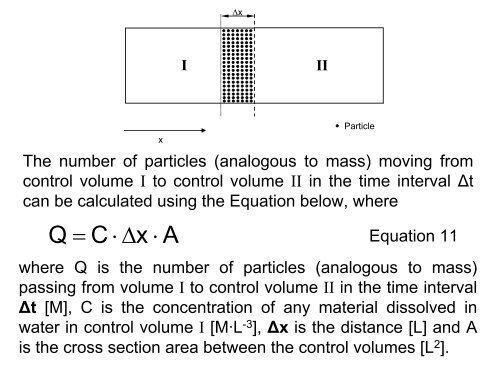Derivation of Basic Transport Equation (A. Ertürk)
Derivation of Basic Transport Equation (A. Ertürk)
Derivation of Basic Transport Equation (A. Ertürk)
You also want an ePaper? Increase the reach of your titles
YUMPU automatically turns print PDFs into web optimized ePapers that Google loves.
Δx<br />
I<br />
II<br />
x<br />
Particle<br />
The number <strong>of</strong> particles (analogous to mass) moving from<br />
control volume I to control volume II in the time interval Δt<br />
can be calculated using the <strong>Equation</strong> below, where<br />
Q<br />
=<br />
C<br />
⋅ Δx<br />
⋅<br />
A<br />
<strong>Equation</strong> 11<br />
where Q is the number <strong>of</strong> particles (analogous to mass)<br />
passing from volume I to control volume II in the time interval<br />
Δt [M], C is the concentration <strong>of</strong> any material dissolved in<br />
water in control volume I [M·L -3 ], Δx is the distance [L] and A<br />
is the cross section area between the control volumes [L 2 ]. 16
















